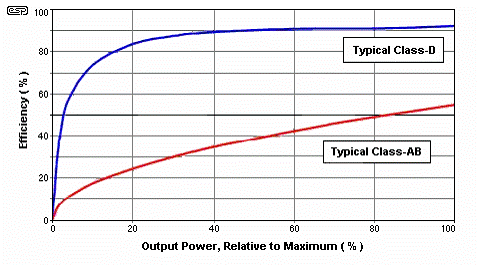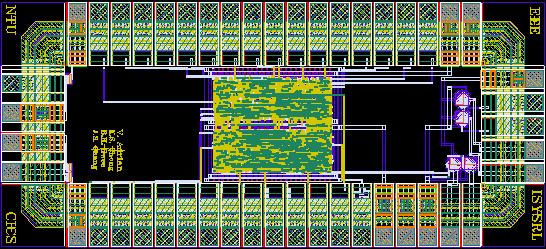Reference:
Baasch, Peter. “ Class-D Amplifier Design: High-Quality Audio Technology Comes of Age.” 31 Aug. 2007. <http://www.future-mag.com/0701/070126.asp>
Leach, Marshall W. Introduction to Electroacoustics and Audio Amplifier Design. Kendall/Hunt, 2001.
Moreno, Sergio. “ Class D Audio Amplifiers - Theory and Design.” June 2005. 31 Aug. 2007. <http://sound.westhost.com/articles/pwm.htm>.![]()
Welcome to IPRO 344 - Energy-Efficient Audio Circuits for Mobile Device
Amplifiers are classified into letter grades based on what parts of the original waveform are amplified. The standard classes of amplifiers included class A, B, AB, and C. In most audio applications class B, AB amplifiers are used. However, an alternative amplifier design, class D amplifiers are beginning to emerge as an ideal solution to the tradeoffs of traditional amplifiers. Since the traditional amplifiers have output devices that conduct even when “off.” This dissipates power, which means there is zero percent efficiency during this time. This lowers the maximum efficiency of these amplifiers.
Class D amplifiers operate on analog principles. They represent the maximum theoretical efficiency of any audio amplifier, with a minimum of audio distortion. Their high efficiency is achieved because they require less power from the power supply, and this requires smaller heat sink. Figure 1.1 compares the efficiency for class AB and class D amplifier. Also, class D amplifiers have high power levels and small design. They operate at high frequencies. Output transistors of class D amplifier operate as switches. Class D amplifiers have two output states “on” and “off” instead of one. In the “on” state, current flows through the device when no drain to source voltage is present. This means that the power dissipation is theoretically zero. In the “off” state, current through the device is zero.

Figure 1 - Efficiency Comparison for Class AB and Class D Amplifier [Source: Class D Amplifiers – Theory and Design]
